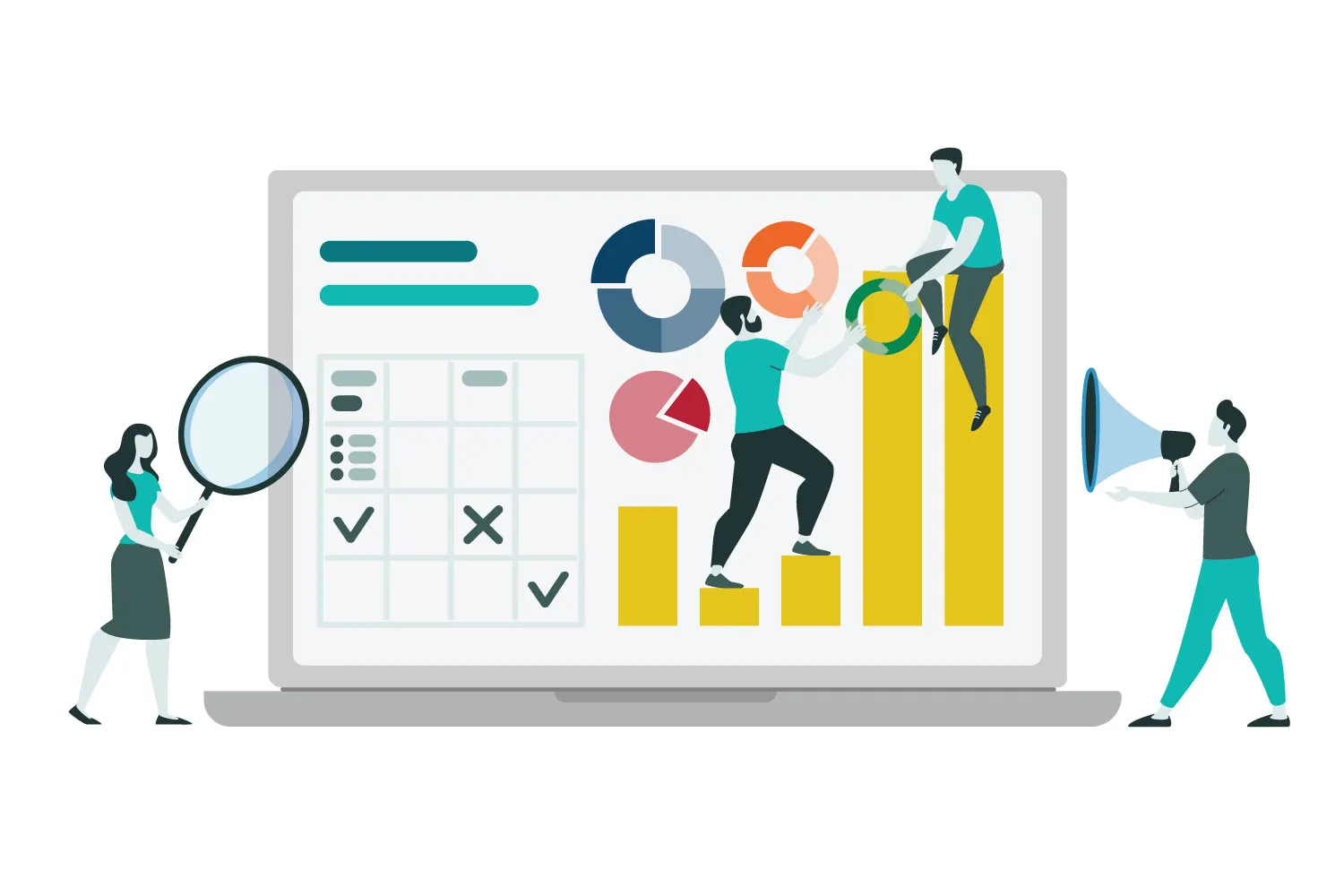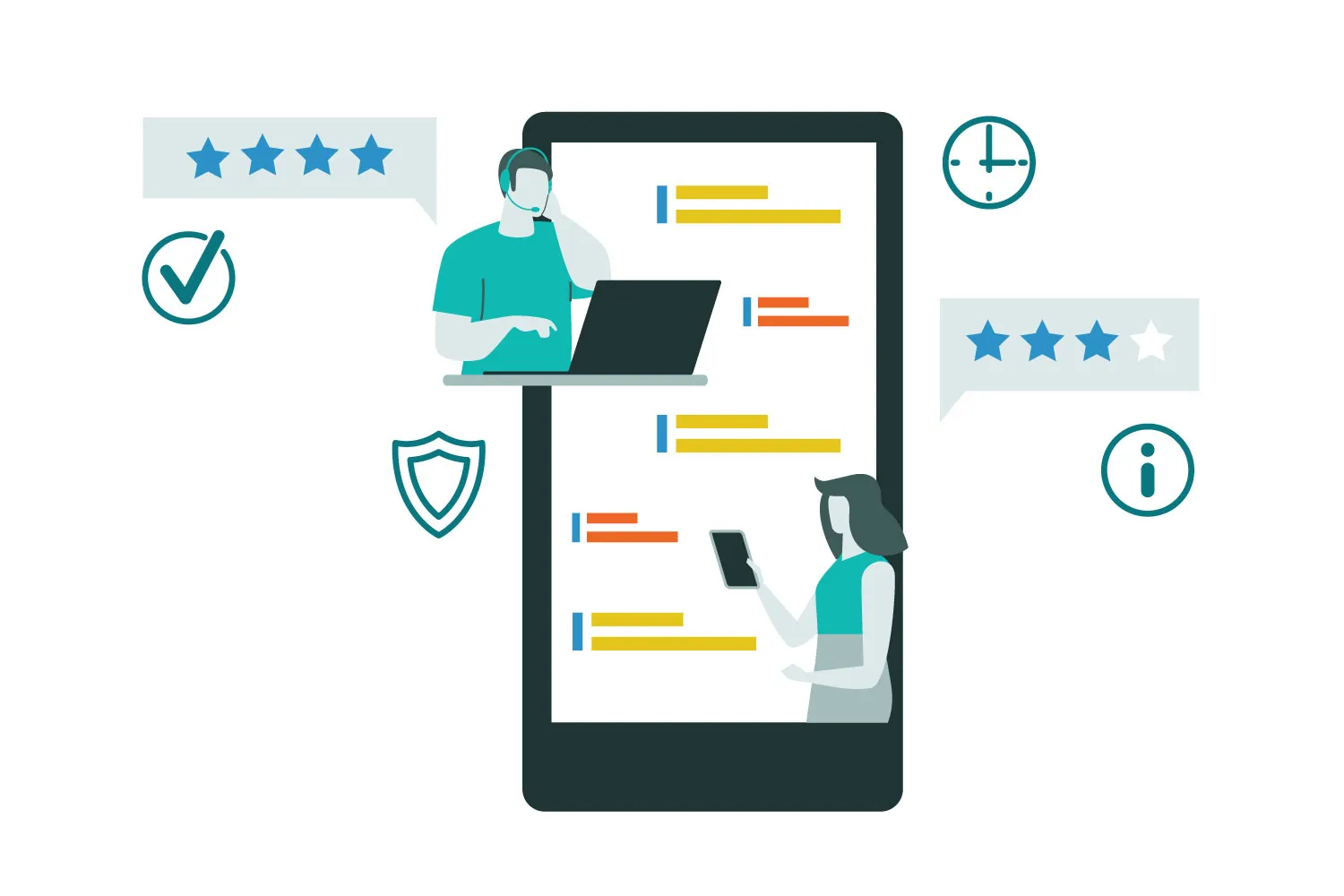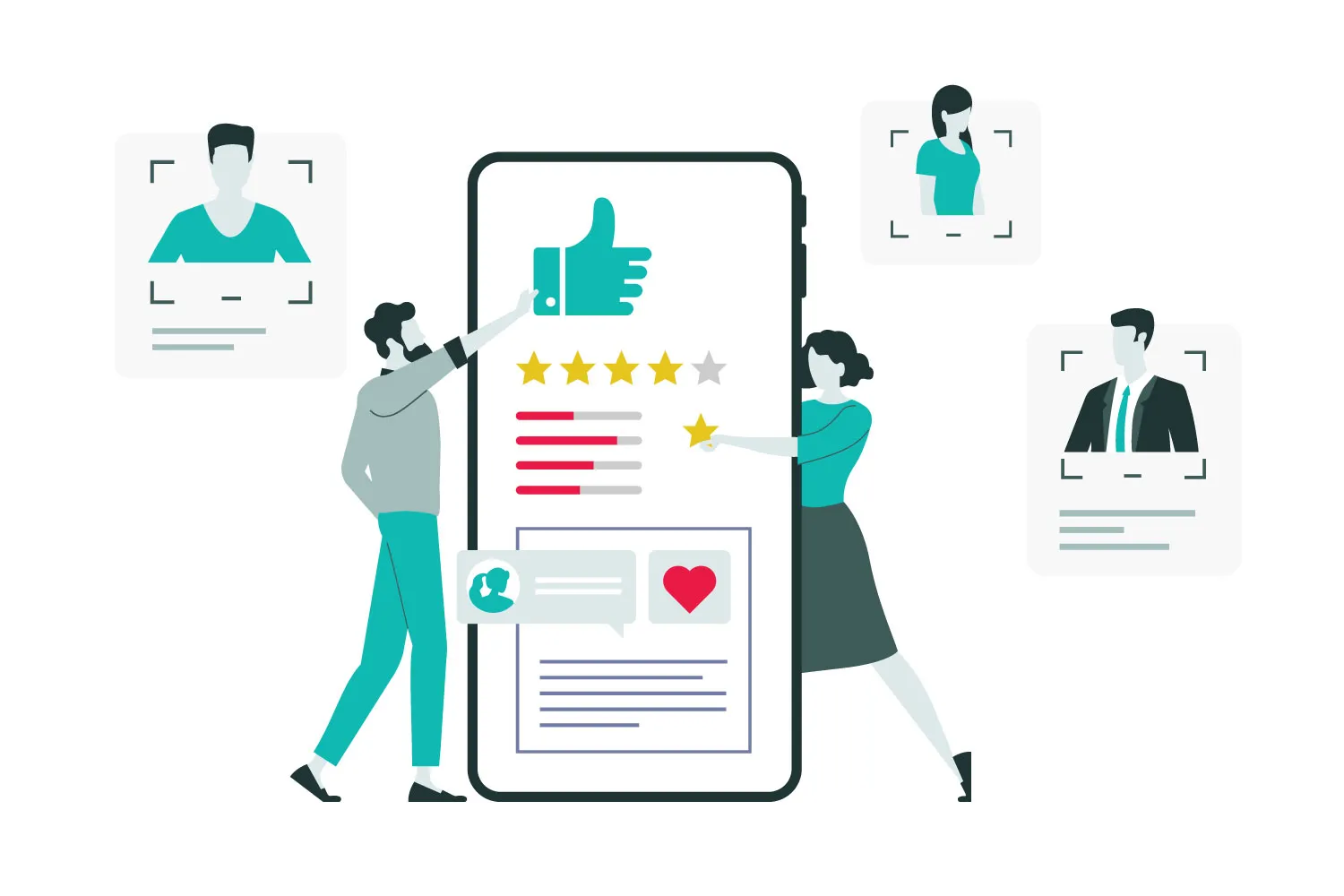January 7, 2020
The retail survival guide: moving from channel to customer-centric
In the ever-evolving world of retail and commerce, one thing remains the same: The customer.
Retail has always been a dynamic industry, but about a decade ago, its transformation began to accelerate. Between the rapid advancement of marketing and commerce technology and the seismic shifts in consumer needs, desires, and preferences, retail is evolving faster now than at any point in history.
That means that retail businesses also need to evolve faster than they ever have before. If you can’t adapt, you won’t survive.
And survival requires a shift not just in your marketing tactics, but in your organizational design and philosophy as well. Winning retailers of the future will transition to a customer-centric model across the entire organization, focusing on building the lifetime value (CLV) of their customers.
The evidence to support this shift is overwhelming. For example, Marketo’s recent report suggests that CLV will become marketers’ number one priority by 2025, with customer retention and marketing-sourced revenue dropping to the second and third spots. CLV has been described as “the only metric that matters” by Forbes contributors, and its growing importance in the retail world reflects the larger, company-wide transitions that are taking place in response to the major industry developments that have occurred over the past decade.
This guide will help you catch up to the present state of retail and prepare for the future. We’ll discuss the four primary domains driving changes in the industry, what the new world of retail actually looks like, the number one reason that retailers fail to adapt, and what your business can do to thrive in 2020 and beyond.
The 4 key drivers revolutionizing the retail industry
1. Unified data

Consumers today expect to have relevant, personalized, and seamless interactions with their favorite retail brands.
When they buy an outfit online, they expect to be able to return it in-store.
If they buy a pair of jeans in-store today, they do not want to be retargeted online with it again tomorrow.
After they speak with customer support over the phone, they hope their future brand interactions will reflect that conversation.
But in the old world of retail, this kind of information was kept in siloed, inaccessible, or otherwise unusable databases. Ecommerce data didn’t speak directly to brick-and-mortar data, and brick-and-mortar data didn’t always speak to wholesale data. Often, data was stored in many different forms, and business applications couldn’t be integrated.
At this point, most retailers have realized that fragmented customer data spurs fragmented customer experiences. With revenue on the line, retailers have made the push to pull together all of their company’s data to form a single, centralized view of their customers. Customer data platforms (CDPs) have helped retailers bridge their data silos and achieve highly granular and powerful visibility into their customers.
2. Advanced analytics

Maybe you’ve already taken steps to unify your data with a CDP or similar data integration tool. Great—but you can’t stop there.
Unified data is not necessarily usable data, so you need to take steps to turn your raw data into information or insights that your marketers can actually use. By engaging in more advanced analytics, retailers can draw more valuable insights with ease. We call this the “analysis maturity curve,” and it occurs in four stages:
- Descriptive analytics: This type of analysis will tell you what’s happening.
- Diagnostic analytics: This type of analysis will tell you what’s happening and why it’s happening.
- Predictive analytics: This type of analysis will tell you what’s likely to happen based on what’s happened in the past.
- Prescriptive analytics: This type of analysis will tell you what to do to improve future outcomes.
In the past, retailers’ ability to monitor and react to consumer behavior was limited and often based on preconceived notions about who their customers were and how they were likely to behave in the future; their analytics maturity was low. This failure to respond to real-time insights resulted in a customer experience that was lukewarm at best.
But in the modern world of retail, predictive and prescriptive analytics are made possible with technologies like machine learning and automated intelligence. By investing in advanced analytics technology, you can test, interrogate, and visualize your data more effectively. You’ll begin to more easily understand who your customers are, how they’re engaging with content, what they’re buying, where they’re buying it, and more, on a minute-by-minute basis.
This increase in analytics maturity will work wonders for the customer experiences you offer, as well as your marketing ROI. As Forrester analysts have shown, businesses that can monitor and optimize customer experiences in real-time are more likely to retain customers, win new customers, and differentiate their brands.
In other words: The faster you can analyze and act on customer data, the faster your business will grow. Surviving—and thriving—in the new world of retail will require rapid test-learn-optimize cycles powered by modern customer analytics software.
3. Customer insight

Precise customer insights are the fruits of your analytics labor. With clearer and more reliable databases, you can make better decisions about how to market to, sell to, and service your customers.
Because a CDP acts as both a central repository for your customer data and an advanced analytics tool, it can help you draw these granular customer insights with ease—then, when you’re ready to act upon these insights, a CDP can help you orchestrate purposeful and data-driven customer engagements. In other words, you can begin to facilitate the relevant, personalized experiences that your customers have come to expect and develop better, longer-lasting relationships with your customers.
In the new world of retail, those improved customer relationships are a goldmine.
For example, many of the brands we’ve worked with have found that about 50 to 80 percent of their total revenue comes from only about 20 percent of their customers. Knowing that such a small percentage of their customer base generates a lion’s share of their revenue, these retailers have altered their customer acquisition strategies to attract only high-value customers. Consequently, these retailers have experienced exponential growth.
Additionally, retailers can use enriched customer databases to segment their audiences by things like gender, homeownership status, household income, and generation. With this level of customer insight, retailers can create supercharged acquisition, retention, and upsell campaigns.
4. Frictionless, 1:1 personalization

If we had to choose just one word to describe the new world of retail and commerce, it would be this one: Frictionless.
Frictionless customer experiences in retail are fast, convenient, and personalized on a one-to-one basis. Enabled by advanced marketing technology and customer insight, frictionless experiences must not only meet but also exceed customer expectations—and they must exceed these expectations across every channel.
According to PWC research, consumers are willing to pay a premium for frictionless and personalized omnichannel experiences—but only if those experiences maintain the human touch. “Good customer experience minimizes friction, maximizes speed and efficiency and maintains a human element, embedded within the automation, AI or other technologies,” the report says. “It leaves consumers feeling heard, seen and appreciated. It has a tangible impact that can be measured in dollars and cents.”
How do you achieve this level of personalization, convenience, and humanization at the same time? One key tool for doing this is customer analytics technology. A CDP can help you segment your audiences, humanize your content, deliver customer experiences at the right time in the right channels, and personalize customer engagements from end to end.
But the technology itself is not enough.
Survival requires a shift from channel-centricity to customer-centricity

Until recently, channel-centric thinking permeated organizational design.
Retailers formed separate teams to oversee for ecommerce, wholesale, and retail channels. Within those teams, individuals were responsible for business functions like marketing, product, sales, and customer support. However, this channel-first strategy resulted in siloed customer data and, ultimately, poor customer experiences.
In the new world of retail, nothing is more important than the customer. Period.
Driven by the four MarTech advancements that are transforming the retail industry—unified data, advanced analytics, customer insight, and frictionless one-to-one personalization—customers have grown to prefer seamless, omnichannel experiences. Channels are dissolving, and what matters now more than ever is a retailer’s ability to provide frictionless brand experiences, wherever and whenever a consumer happens to interact with their brand.
And the winners know this. Early on, brands like Amazon, Casper, Netflix, Uber, and Peloton recognized the importance of customer experience and disrupted the retail industry.
Instead of focusing on old, channel-centric metrics like impressions, click-through rates, open rates, and cost-per-acquisition, modern retailers have started to measure their success with customer-centric data such as:
- Customer lifetime value
- Zero-party data
- Churn prediction
- Brand advocacy
By re-shaping the way their businesses operate, measure success, and engage with their customers, modern retailers have transformed the industry—and there’s no going back now. In fact, in a global 2019 survey conducted by the Conference Board, 80 percent of C-suite executives agreed that developing a customer-centric, cross-functional strategy will be a top priority in the future.
Despite this clear shift in priorities, many brands have struggled to embrace the new world of customer-centricity to its fullest.
Why are some brands still struggling to make this shift?
There’s a pretty straightforward reason: Data.
Even though moving to a more data-driven, customer-centric business model has become a top priority, many brands have found it difficult to structure their data ecosystems effectively in order to put their customer data to good use.
Common data challenges include:
- Siloed, disconnected and unstructured data is difficult to centralize.
- Data is scattered across too many varied, outdated, or complicated tools.
- Processes regarding data management are often manual and/or inefficient.
- Retailers are unclear about data ownership—who controls the data in the first place? Marketing? IT?
- Businesses implement customer analytics technology without building the processes, skill sets, and attitudes their teams need to realize the technology’s full benefit.
We get it. Restructuring the way you collect, manage, and analyze customer data requires vast, company-wide shifts that can be difficult for even the most data-savvy among us. But brands who don’t adapt to this new world won’t last—and marketers who don’t learn new technological skills won’t last either.
So what can you do to push forward?
It’s time to reorient your business (and your data) around the customer
The first step is investing in a CDP to help you genuinely understand and engage with your customers.
Unlike a customer relationship management platform (CRM) or a data management platform (DMP), a CDP supports the collection, unification, analysis, and activation of your customer data across channels. It integrates data from a variety of sources to create a single customer view, giving retailers the ability to extract precise insights about their customers and act on those insights for better marketing, sales, and service.
Acting as the centralized hub for both marketers and support teams to manage customer engagements, a CDP is a customer-centric data ecosystem where you can unify your data, identify high-value audiences, and automatically push those audiences into multiple channels for hyper-targeted campaigns.
In the new world of retail, a CDP is one of the most important tools for growth.
But here’s the catch: A CDP is only as powerful as the marketers who use it. Without the technical know-how to use your CDP and orchestrate customer journeys effectively, you’ll struggle to achieve the revenue growth and service improvements that a successful CDP implementation can enable.
While evaluating customer analytics solutions, look for a vendor that can also act as a partner and a consultant to you as you’re making the shift to customer-centric retail.
Lexer’s CDP and professional services will solve your data challenges for bottom-line growth

Lexer’s CDP will help you effortlessly combine and enrich your customer data, gain invaluable customer insights, segment your customer database, and activate high-value audiences for cross-channel targeting—and we’ll help you every step of the way.
Our dedicated support team provides extensive training to help you maximize the impact of your CDP. Additionally, we’ll work with you to provide insights and recommendations for improving your customer acquisition, retention, and growth strategies.
Are you ready to enter the new world of retail?
Schedule a demo with our team to see how Lexer can help you make the shift to a customer-centric business model.
Speak with our retail experts

